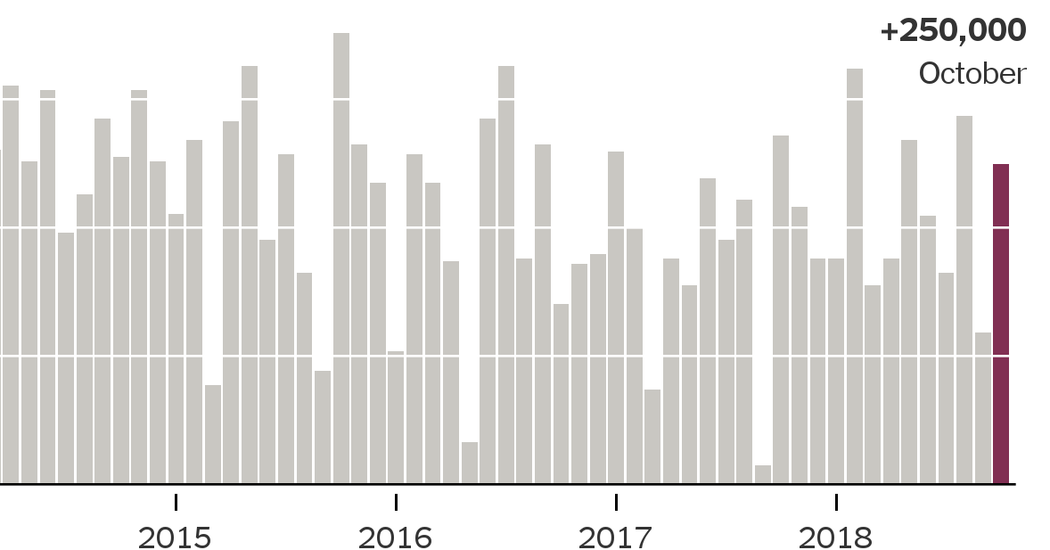“If I were a Republican politician, I would be shouting about it,” Mr. Shepherdson said, “but there’s no way that growth is going to continue.” Manufacturing sectors in China, in particular, and Europe are weakening sharply, he said. The commentary accompanying the release of the manufacturing index this week, he said, was “tariffs, tariffs, tariffs.”
October’s figures will be revised twice more, and September’s once more.
An Eye on Wages
Although the unemployment rate has consistently surfed below the levels reached in 2000, at the height of that expansion, wages have been growing at significantly slower rates.
Low wages in many sectors have contributed to financial instability. More than a quarter of Americans don’t earn enough to cover basic expenses, while more than a third are unable to pay all their bills on time, according to a report released Thursday by the Center for Financial Services Innovation, a nonprofit funded by foundations and several banks. That shortfall has contributed to mounting credit card debt and loan defaults.
October’s report, however, is among several recent signs that wage growth is picking up.
According to a report last week from the research arm of the payroll processing firm ADP, for instance, American workers are earning nearly $1 more per hour on average than they were a year ago.
William H. Stoller, chairman and chief executive of Express Employment Professionals, which is based in Oklahoma City, said pay in light industrial and administrative jobs, for example, had climbed to $14.50 to $15.50 an hour, from roughly $13.60 a year ago. Most job applicants whom his firm encounters are looking for higher pay and more opportunities to advance.
“What’s so impressive to me is there have been more jobs than workers every month since March of this year,” said Scott Clemons, chief investment strategist at Brown Brothers Harriman. Openings exceeded 7.1 million, according to the government’s most recent count.








